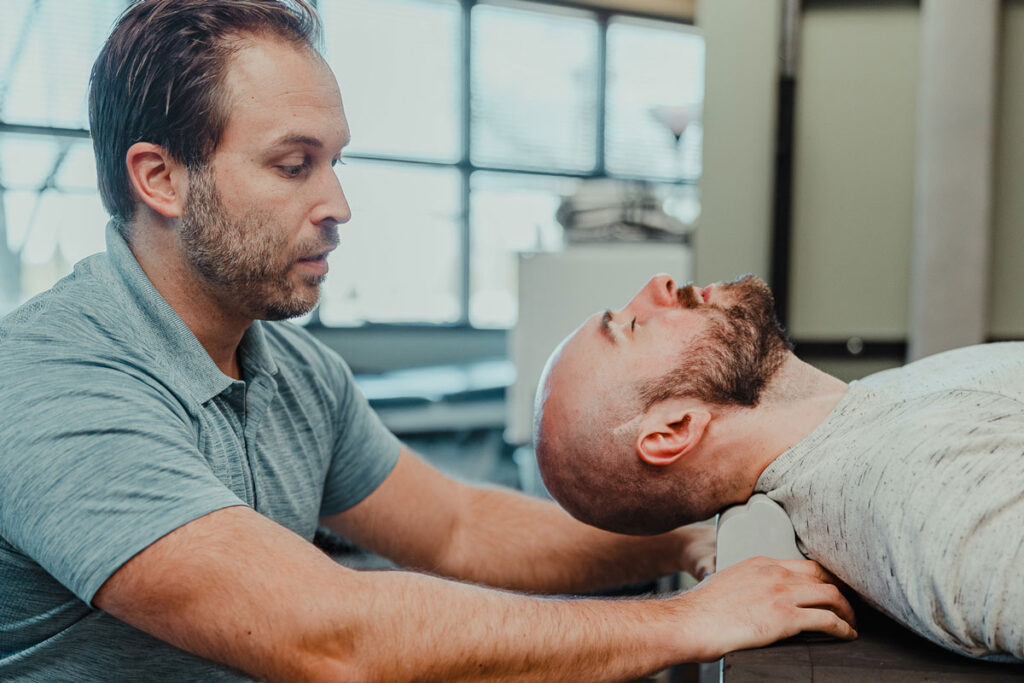Neck pain is a common concern in clinical practices, particularly among pain management and spine specialists. This discomfort is closely tied to posture, which influences the mechanical and structural integrity of the cervical spine and its supporting tissues. Addressing poor posture can play a key role in preventing and managing neck pain effectively.
Understanding the Factors Contributing to Neck Pain
A variety of factors lead to neck pain, including injuries and age-related changes. Car accidents and sports injuries often result in strain, whiplash, or damage to the cervical spine, causing acute or chronic discomfort. Conditions like arthritis often trigger inflammation and degeneration in the facet joints, while herniated discs compress nearby nerves, leading to pain and reduced mobility.
Age-related degeneration also affects the spine. Over time, intervertebral discs lose hydration and elasticity, reducing their ability to cushion the vertebrae. Osteoarthritic changes may develop in the facet joints, and bone spurs can form. These structural changes can disrupt the neck’s alignment and function, contributing to chronic pain.
Examining the Impacts of Poor Posture
The neck endures considerable mechanical strain during everyday activities. Repetitive movements and prolonged sedentary behavior places ongoing stress on the cervical spine. These factors can weaken the neck’s muscles, ligaments, and tendons, potentially leading to chronic pain.
Poor posture exacerbates this strain. Slouching, craning the head forward, or tilting it downward for long periods adds significant pressure to the neck’s support structures. This repeated stress can create muscle imbalances and trigger points, resulting in discomfort or fatigue.
The widespread use of smartphones and other digital devices has introduced a condition often called “text neck.” Holding a downward gaze to view screens significantly increases the load on the cervical spine. The forward tilt of the head amplifies the strain, and prolonged usage accelerates muscle dysfunction, often causing pain and discomfort.
Preventing and Managing Neck Pain
Promoting proper ergonomics is key for reducing strain on the spine and preventing discomfort. Maintaining good posture throughout the day is needed for long-term spinal health. Here are some simple tips to help mitigate neck discomfort:
- Adjust monitor height: Keep your screen at eye level to encourage a healthier posture.
- Use supportive chairs: Opt for proper lumbar support to maintain spinal alignment.
- Take regular breaks: Avoid staying in static positions for too long by moving, stretching, and changing positions.
- Incorporate targeted exercises: Strengthen the neck and spine with exercises.
Following these steps helps improve posture, enhance flexibility, and support your neck and upper back effectively. For those experiencing severe pain, treatments like targeted injections or, in some cases, surgery may be necessary. Proper pain management helps alleviate discomfort while you work on strengthening and improving mobility.
Supporting Patients Through Practical Steps
Educating patients about the relationship between posture and neck pain is a key step in clinical management. Incorporating physical therapy referrals, ergonomic advice, and home exercise programs can empower individuals to achieve lasting relief. Simple adjustments like improving workspace setup or daily posture habits can make a significant difference. Ongoing evaluation and individualized treatment plans ensure that each patient receives the best care tailored to their unique circumstances.
Addressing Neck Pain Through Posture Awareness
Neck pain is frequently exacerbated by poor posture and repetitive habits that strain the cervical spine. By addressing these contributing factors, specialists help mitigate discomfort and improve patients’ quality of life. Implementing practical ergonomic adjustments, targeted exercises, and posture education establishes a foundation for better neck health, supporting patients in their pursuit of comfort and mobility.

